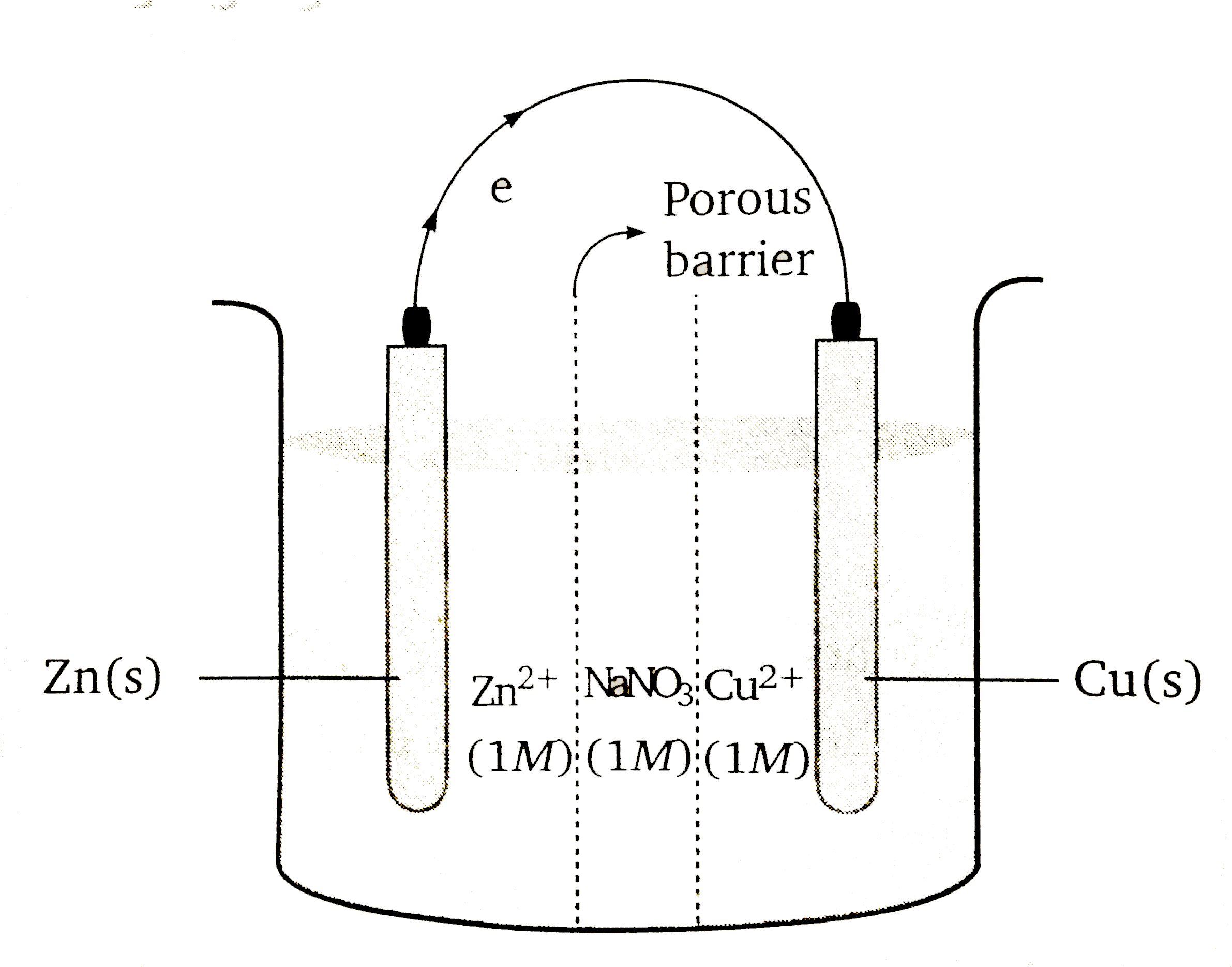If the equilibrium constant for the reaction H+(aq)+OH−(aq)⇔H2O(l) is 1013 at certain temperature then what is the E∘ for the reaction, 2H2O(l)+2e−⇔H2(g)+2OH−(aq)Solution in Telugu
4.74V
-0.858V
4.37V
1.09V
The correct Answer is:B
Step by step video & image solution for If the equilibrium constant for the reaction H^+(aq)+OH^-)(aq)iffH_2O(l) is 10^13 at certain temperature then what is the E^(@) for the reaction, 2H_2O(l)+2e^-)iffH_2(g)+2OH^(-)(aq) by Chemistry experts to help you in doubts & scoring excellent marks in Class 11 exams.
Topper's Solved these Questions
- BOOK - NARENDRA AWASTHICHAPTER - ELECTROCHEMISTRYEXERCISE - Level 3 - Passage5videos
ELECTROCHEMISTRY
- BOOK - NARENDRA AWASTHICHAPTER - ELECTROCHEMISTRYEXERCISE - Level 3 - One Or More Answers Are Correct2videos
ELECTROCHEMISTRY
- BOOK - NARENDRA AWASTHICHAPTER - ELECTROCHEMISTRYEXERCISE - Level 1 (Q.91 To Q.120)1videos
ELECTROCHEMISTRY
- BOOK - NARENDRA AWASTHICHAPTER - DILUTE SOLUTIONEXERCISE - Level 3 - Match The Column1videos
DILUTE SOLUTION
- BOOK - NARENDRA AWASTHICHAPTER - GASEOUS STATEEXERCISE - Level 3 - Subjective Problems1videos
GASEOUS STATE
Similar Questions

A Galvanic cell consits of three compartment as shown in figure. The first compartment contain ZnSO4(1M) and III compartment contain CuSO4(1M). The mid compartment contain NaNO3 (1M). Each compartment contain 1L solution:
E∘Zn2+/Zn=−0.76, E∘Cu2+/Cu=+0.34,
The concertation of Zn2+ in first compartment after passage of 0.1 F charge will be:View SolutionIn a sample of H-atoms electrons are de-exicited from 4th excited state to ground state. Which is/are correct statement ?
03:40View SolutionThe Zn acts as sacrificial or cathodic protection to prevent rusting of iron because :
05:51View SolutionColumn -I and Column -II contain four entries each. Entries of column-I are to be matched with some entries of column-II. One or more than one entries of column-I may have the matching with the same entries of column-II.
 View Solution
View SolutionOne mole of a gas changed from its initial state (15L,2 atm) to final state (4L,10 atm) reversibly. If this change can be represented by a straight line in P - V curve maximum temperature (approximate), the gas attained is x×102K. Then find the value of x.
02:56View SolutionDetermine the equilibrium constant for the reaction : HF(aq)+NH_3(aq)toNH_4^(+)(aq)+F^(-)(aq) K_a=6.9xx10^(-4) NH_3(aq)+H_2O(l)toNH_4^(+)(aq)+OH^(-)(aq) K_b=1.8xx10^(-5) 2H_2O(l)toH_3O^(+)(aq)+OH^(-)(aq) K_w=1.0xx10^(-14)
02:42View Solutionwhat is the standard electrode potential for the reduction of HClO?
HClO(aq)+H+(aq+2e−→Cl−(aq)+H2O(l)
Given: Cr2(aq)→Cr3+(aq)+e−,E∘=0.41V
HClO(aq)+H+(aq)+2Cr2+(aq)→2Cr3+(aq)+H2O(l),E∘=1.8002:56View SolutionFrom the fllowing half-cell reactions and their standard potentials ,what is the smallest possible standard e.m.f for spontaneous reactions? PO_4^(3-)(aq)+2H_2O(l)+2e^(-)toHPO_3^(2-)+3OH^(-)(aq), E^(@)=-1.05V PbO_2(s)+H_2O(l)+2e^(-)toPbO(s)+2OH^(-)(aq),E^(@)=+0.28 V
02:56View SolutionIf the equilibrium constant for the reaction H+(aq)+OH−(aq)⇔H2O(l) is 1013 at certain temperature then what is the E∘ for the reaction, 2H2O(l)+2e−⇔H2(g)+2OH−(aq)
06:13View Solutionनिम्नलिखित अभिक्रिया से आप कौन सी सूचनाएँ प्राप्त कर सकता हैं -
(CN)2(g)+2OH−(aq)→CN−(aq)+CNO−(aq)+H2O(l)04:14View SolutionObserve the following reaction, 2NO_(2)(g) + 2OH^(-)(aq) to NO_(3)^(-)(aq) + H_(2)O (l) + NO_(2)^(-) (aq) in this reaction,
04:36View SolutionWhat sorts of informations can you draw form the following reaction : (CN)_(2)(g)+2OH^(-)(aq)rarrCN^(-)(aq)+CN^(-)(aq)rarrCN^(-)(aq)+CN^(-)(aq)+CNO^(-)(aq)+H_(2)O(l)
02:22View SolutionWhat sort of informations can you draw from the following reaction?
(CN)2(g)+2ΘOH(aq)→CNΘ(aq)+CNOΘ(aq)+H2O(l)03:28View SolutionEquilibrium constant for reaction NH4OH(aq)+H+(aq)⇔NH+4(aq)+H2O(l)
1.8×199.
Hence equilibrium constant for ionization NH3+H2O⇔NH+4(aq)+OH−(aq) is x×10−6. The value of 'x' is02:56View SolutionThe equilibrium constant for the reaction given is 3.6xx10^(-7)OCl^(-)(aq)+H_2O(l)hArrHOCl(aq)+OH^(-)(aq). What is Ka for HOCl ?
01:51View Solutionwhat is the standard electrode potential for the reduction of HClO?
HClO(aq)+H+(aq+2e−→Cl−(aq)+H2O(l)
Given: Cr2(aq)→Cr3+(aq)+e−,E∘=0.41V
HClO(aq)+H+(aq)+2Cr2+(aq)→2Cr3+(aq)+H2O(l),E∘=1.8004:41View Solution

